After weaving over gravel roads for a few days, we were pleasantly surprised to encounter a more solid track along the Atlantic coast of Namibia. From the looks of it, we assumed it was just worn down tar but later learned that it was actually salt! Gypsum, one of the components of salt, binds with the sand and the mixture is used to lay roads in these parts. With salt pans plentiful along the west coast and no shortage of sand in the Namib desert, the required raw materials are close at hand.Salt captures moisture from the fog and keeps the mix from drying out or forming a hard crust. The result is as good as a tar road and we were able to make quick time on our way to Cape Cross Seal Reserve, about 60 kms north of Henties Bay.
The wide open landscape along the Skeleton Coast is quite surreal. On this overcast afternoon, everything appeared bleached adding to the overall desolation. We encountered very few vehicles and those we did come across belonged to fishermen - they had one fishing rod each sticking out of the window on either side. As they passed by, they looked like giant insects with long antennae! There were heading to one of several 4X4 only turnoffs that lead to designated fishing spots.
We registered ourselves at the entrance of the Seal Reserve and had to drive a few kilometers on the access road before we reached the seal colony. Even as we approached it, we could see a vast stretch of coast densely packed with seals. A boardwalk has been laid for a short distance so visitors can get a closer look. Despite being secured by swing gates, some seals had sneaked into the wooden path and we had to cautiously skirt around them to proceed.
It was truly amazing to behold thousands of seals lying on the beach. The adults were lounging on the sand or sunning themselves on the rocks. Groups of noisy little pups were flapping their tiny flippers and scampering around. And the impact is not purely visual. Imagine being surrounded by thousands of snorting and grunting pigs and an equal number of bleating goats. In stereo sound no less. That is what a large colony Cape fur seals sounds like. And the smell? Lets just say that it was quite strong and not evocative of perfume.
Cape Fur Seal Colony at Cape Cross - Video
A closer look Fur Seals - Video
The Cape fur seal is one of three species of fur seals occurring in southern Africa. While many seal colonies are on offshore islands, a few occur on the mainland between southern Angola and the east coast of South Africa. Cape Cross is a small headland on the Namibian coast and is home to one of the largest colonies of Cape fur seals in the world. Fur seals travel long distances but they do not migrate with the seasons. Consequently seals are present at Cape Cross throughout the year. Depending on the season their numbers fluctuate between 80,000 and 100,000 individuals!
We learned that over 90% of seal pups are born within a 30 day period between November and December. So during our visit, about half the colony were pups that were just over a couple of months old. Adult males are infrequent visitors to land except during mating season in October, so there were few around. On the other hand the females, which are much smaller in size, stick around until the pups are weaned and learn to fish.
There were a large numbers of seals in the water and it was a delight to watch them frolic in the surf. Surely those graceful dives over the surface of the water are not essential to catching fish? We think they were mixing play with work or just having a good time. We noticed some adult seals herding a small group of pups towards what appeared to be a common nursery area. To get there they had to cross beneath the boardwalk that visitors were on. They would stop a few meters from the boardwalk waiting for humans to vacate the area before passing underneath. Clearly a boardwalk so close to a seal colony does not seem like a good idea and should be moved further back.
Seals and surf - Video
But in reality, the few visitors who interfere with their movements are not their biggest problem. The Seal Reserve is not a safe haven for the fur seal population as one might expect. Cape Cross is one of two main sites in Namibia where seals are culled. The reason - the huge amount of fish that the seals consume. The Namibian government initiated study found that seal colonies consume more fish than the entire fishing industry can catch. Depletion of fish stock and its economic impact has led them to allow annual culling of thousands of seals and pups.
Needless to say, this has upset many conservation groups and Namibia has been under fire internationally for this policy. They present other studies that contradict the government findings and question the need for culling. According to some sources the Namibian government is responsible for the largest slaughter of marine mammals on earth! But more than the sheer numbers, what is disturbing is the brutality involved. During the culling season, thousands of pups are systematically rounded up and bludgeoned to death! So as to not attract too much attention, it is carried out between 6 am and 9 am in the morning and the area cleaned up before any visitors enter the reserve. To spread awareness, some activist groups have secretly filmed the culling and are disseminating it to travel agencies around the world requesting that they boycott Namibia as a tourism destination.
The friendly lady at the Tourist Information Center in Henties Bay talked to us at some length about this controversial issue. Evidently she had been pummeled with email from people from all over the world (who probably saw the film or some documentary on the subject) campaigning to have this practice discontinued. While she was sympathetic to their views on the methods used, she did not think that this policy posed any threat to the Cape fur seal population as a whole. It is not an endangered species and they are not in any danger of extinction, she contended. But their propensity to consume large volumes of fish definitely posed a risk to the livelihood of local fishermen. Besides, she argued, why is there no outrage about wringing the necks of chicken or beheading cows? Regardless of where your sympathies lie, this is just one more of the innumerable instances where the interests of man and wildlife are at odds. At Cape Cross, the fur seals are losing.
On our way to Cape Cross, we had intermittently noticed groups of tables and planks on the road side with large rock crystals (perhaps salt) neatly arranged over them. The curious thing was there was nobody around and we had no idea what they were for. On the way back, curiosity got the better of us and we stopped by one of the tables to take a closer look. On it was written in chalk - N$3 each. There was a glass jar with a slit for you to drop you money into if you decided to take one. Did the honor system really work in the middle of the desert ? We will never know.
Google Maps Link
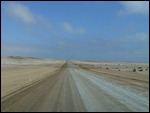
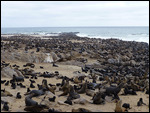
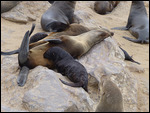



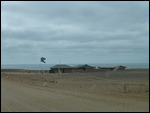
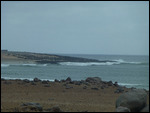
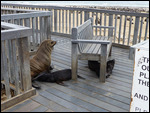

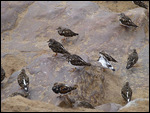


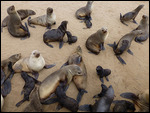


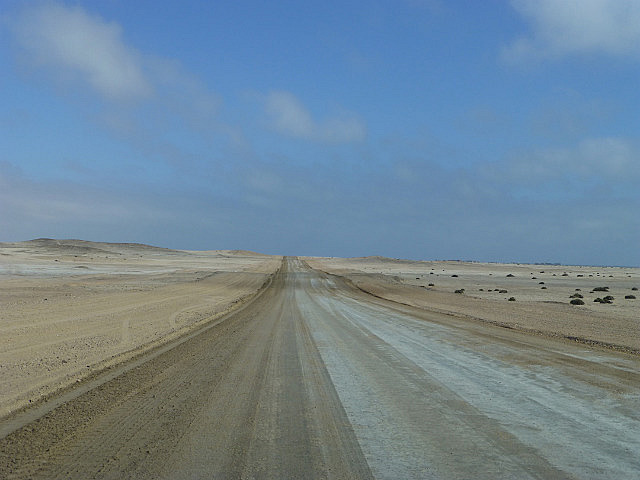
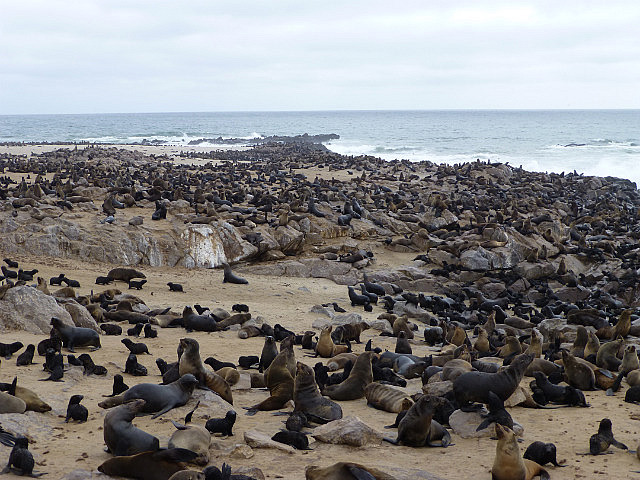


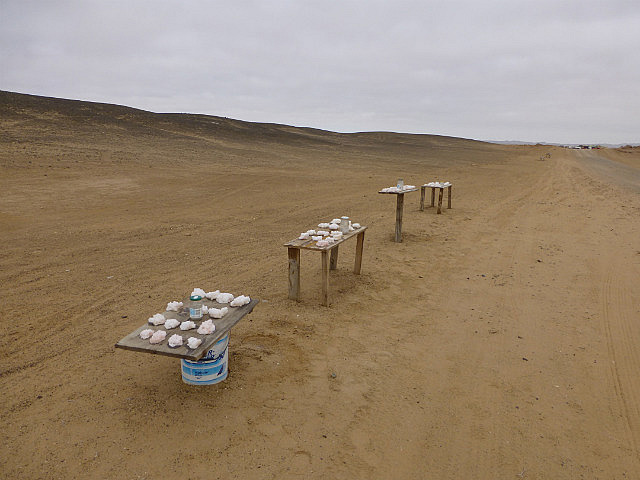
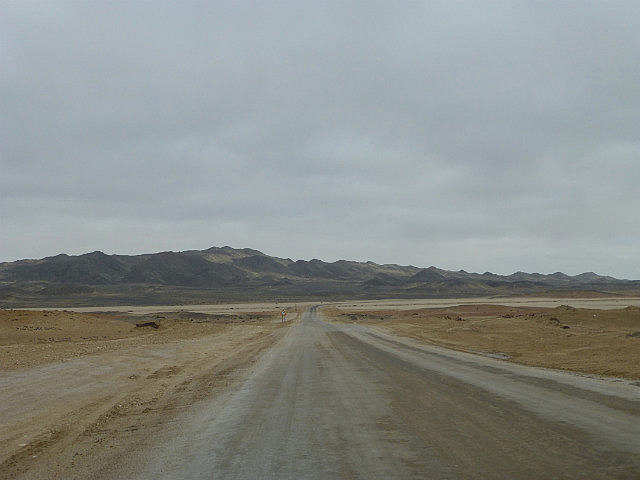
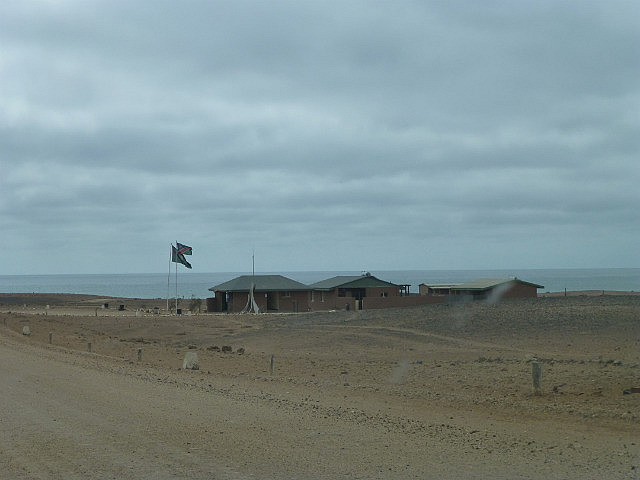

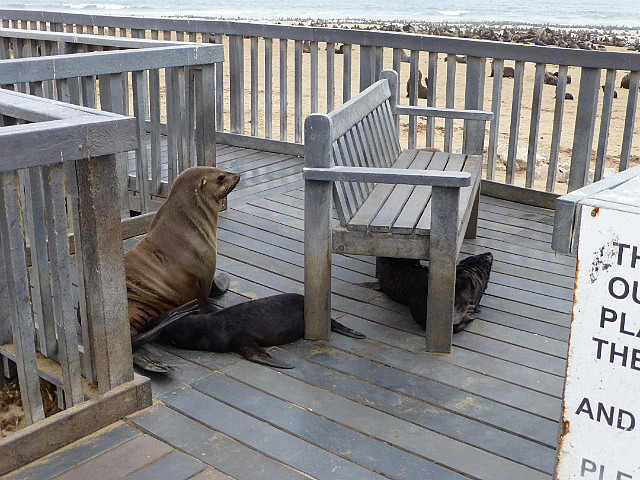
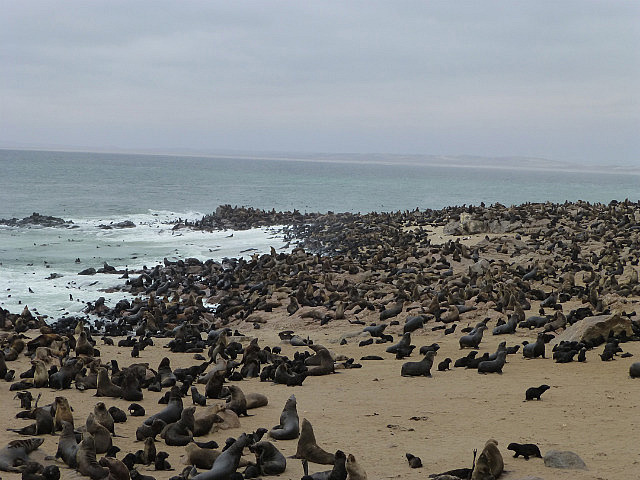
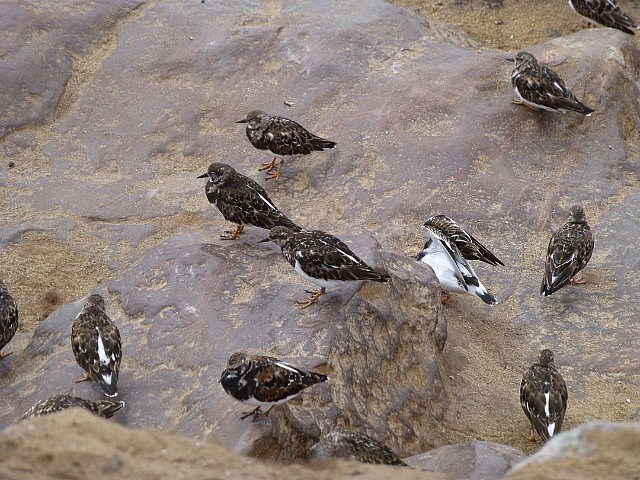



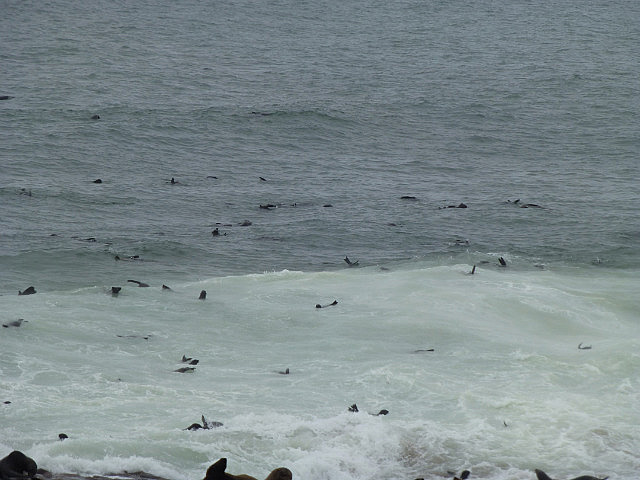
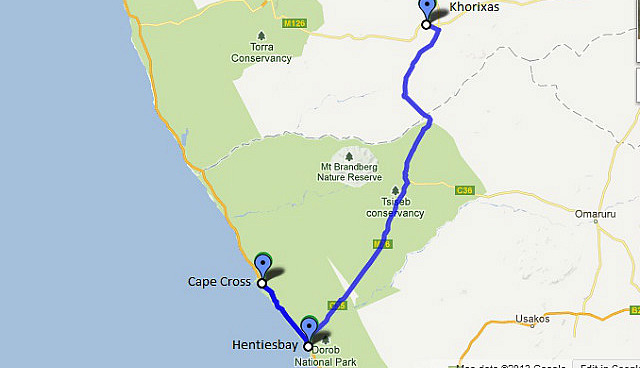
Comments